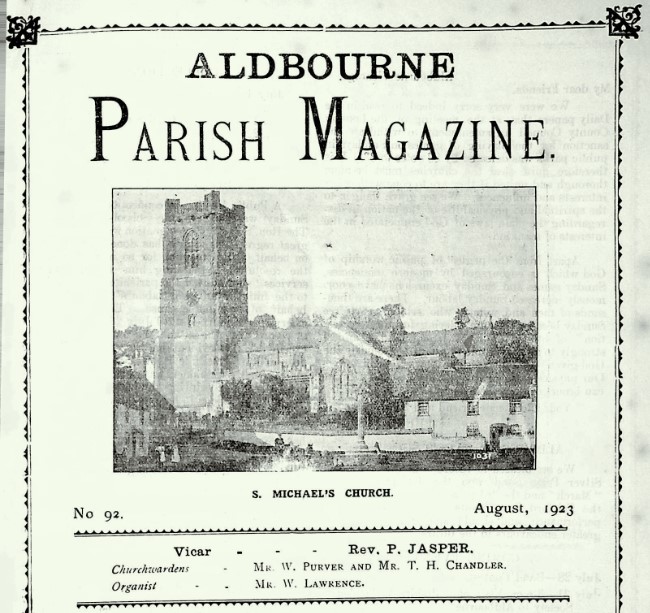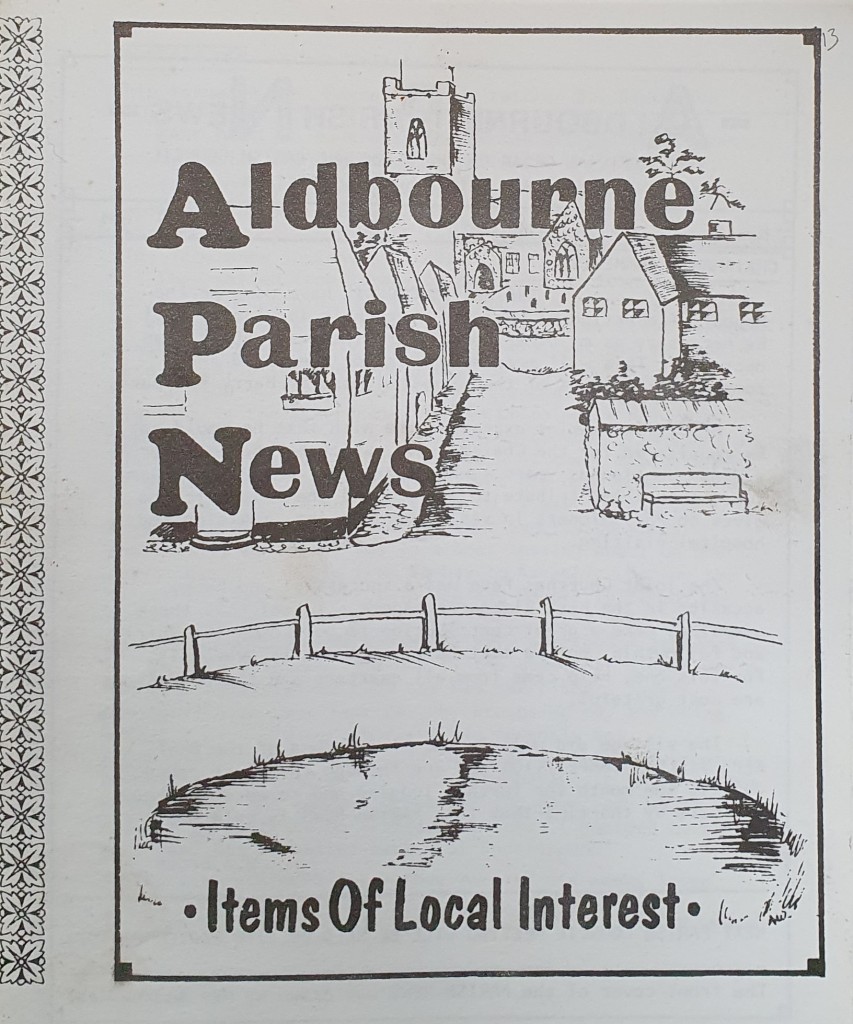
The latest issue of the Dabchick magazine has just arrived through the door. Even in this digital age there is great comfort to be had settling down with a warm beverage, and scanning the latest village news in print. With such horrible weather over the last few days, I’ve read the magazine from cover to cover.
Then I fell to wondering: what was the latest village news 50, or even 100 years ago? We can research this because of the hard work by contributors and editors, supporters, advertisers and keepers of archives going right back to the 19th century and up to the present day. Thanks to one and all!

The Vicar in 1923, Philip Jasper, expressed his sorrow that ‘an amendment to withdraw the sanction for the playing of games on Sundays in public parks was defeated by 83 votes to 33’. Rev Jasper went on to request that all people guard tenaciously the principle of one day’s rest in seven.
The Aldbourne Silver Prize Band were congratulated for their success at the Fairford Band Contest. 1st prize in the ‘March’ and 3rd prize for the ‘Selection’.
The Wiltshire Archaeological [and Natural History] Society visited St Michael’s, Aldbourne on 31 July 1923. The Rev Jasper observed that in the Society programme the church was described as originally dedicated to St Mary Magdalene, but that the dedication was probably altered to St Michael in the 15th Century.
The Society minutes record that three char-a-bancs started from Marlborough, preceded by a line of more than thirty private cars. It rained.
On the return journey the cavalcade ran into a rain storm of ‘quite phenomenal violence, which fortunately lasted only a few minutes’. Sounds familiar for August!
On 30 June 1923 Sidney David Hillier married Margaret Elizabeth Foster. Margaret was a widow with young twin sons, Fred and Arthur. Margaret’s first husband, Arthur Thomas Foster was born in London and was in Aldbourne at the time of his enlistment. He was killed in action on 20 September 1917. His widow and sons moved to Aldbourne towards the end of the war. Their family story is told on the Aldbourne Heritage Centre website http://aldbourneheritage.org.uk/new-acquisition-two-new-testaments-celebrating-peace-wwi

The cover picture for this edition of the Parish News was drawn by Mrs Andrea West. In the Chairman’s Comments, the newly elected W A Brown paid tribute to Andrea’s grandfather, Oliver Hawkins. The Joint Churches Fete had gone well (no mention of bad weather), and the village had done well in the first round of the Best Kept Village Competition.
There was a report by Harry Sheppard thanking all the walkers and helpers of the 1973 Beating of the Bounds. The highest number of participants to date was recorded – 63 starting from the Green. At one point 90 adults and children were counted through the gateway on Shuger Waie, and despite thunder, lightning and heavy rain, over 40 completed the whole walk.
The guest writer in this edition was R E M Mayne, Esq who with his wife, Cicely, came to Aldbourne to stay in their cottage in Marlborough Road, following his retirement in 1969.
The recipe of the month was ‘Fidget Pie’ – a popular dish at Harvest Time. Sounds just the thing for a chilly, damp August tea-time – maybe to be followed by Strawberry Bircher Bowl, the recipe in the most recent Dabchick!















